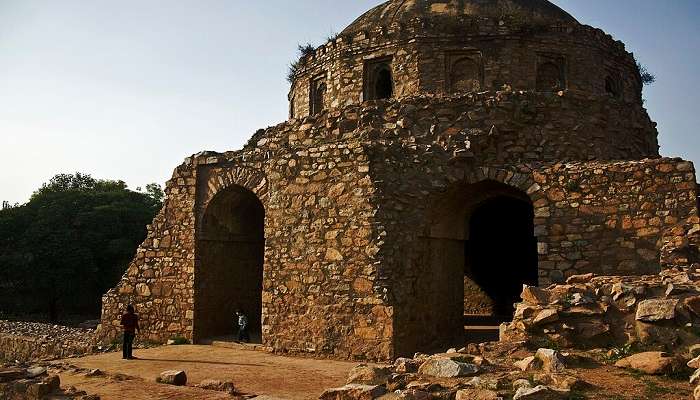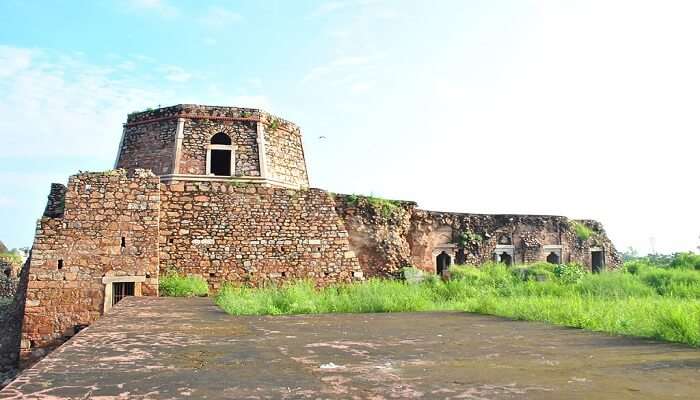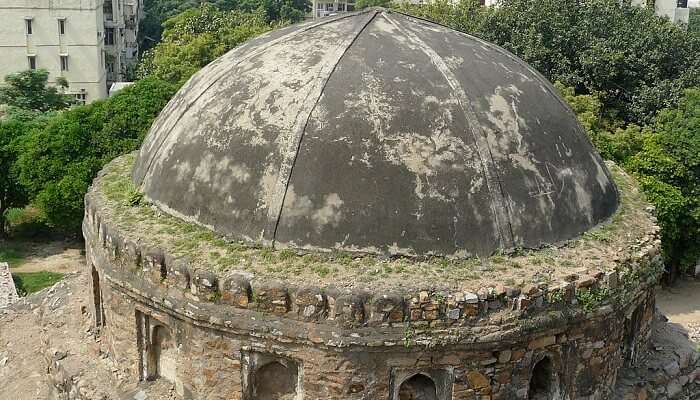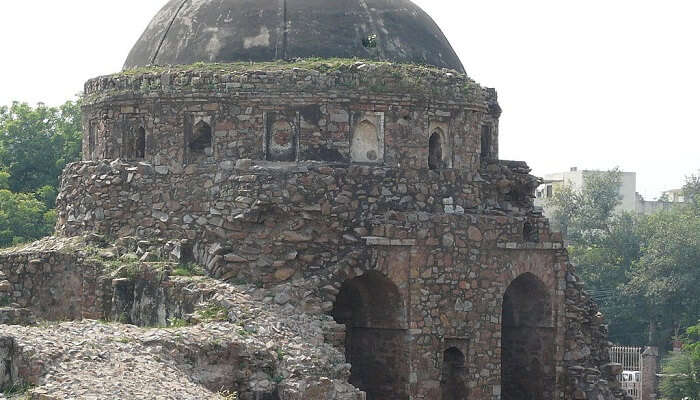Exploring The Historical Significance Of Bijay Mandal In Delhi In 2025

A hidden gem in the bustling city, Bijay Mandal in Delhi, where you can get a sneak peek of the ancient grandeur that was India. This historic place in the Mehrauli area is an architectural wonder built in the 14th century. Once a part of Siri Fort, one among seven cities of Delhi, Bijay Mandal served as a residence for kings and a fort. Unlike other regional structures, its artistic style and ornamental stonework are influenced by wealth during this era. For those who know little about places to visit in Delhi, Bijay Mandal provides a place where one can be alone with his/her thoughts, and it also has beautiful views over the city’s surroundings; therefore, every traveller interested in history will put this site on his list when exploring historical sites of Delhi.
All About The Bijay Mandal
Delhi is home to Bijay Mandal, a historic site from the fourteenth century. It was a component of the Siri Fort complex, which Alauddin Khilji had constructed. This historic palace, which boasts elaborate architecture and expansive views, functioned as a royal residence and a defensive fortress.
1. Origins of Bijay Mandal

Bijay Mandal in Delhi dates back to the 14th century, during the reign of Muhammad bin Tughlaq, the ruler of the Tughlaq Dynasty. Part of his more fantastic city of Jahanpanah – translating literally to “Refuge of the World” – Bijay Mandal in Delhi was built as a defence structure, alongside its use as a royal palace. The octagonal design and the successive terraces are two unique features that bring out the imagination of the time in architecture. This was an administrative and ceremonial centre, and it amply reflected the power and imperial glory of the Tughlaq rule.
Tip: Get a sense of the architectural details of Bijay Mandal and try to visualize this structure working in its prime time. That will enhance your appreciation of its historical importance.
Also Read: Mini Qutub Minar
2. Historical Significance and Legacy

Over the centuries, Bijay Mandal in Delhi has withstood the test of time, bearing witness to the ebb and flow of Delhi’s history. This strategic location and robust structure impetus the monument as a critical site in the study of medieval urbanism and mechanisms of defence. Though lesser known than other historical places in Delhi, Bijay Mandal is a depository of stories regarding the city’s past; much can be unravelled about the socio-political and cultural life of the Tughlaq times.
Tip: Read about the Tughlaq dynasty and Jahanpanah city before visiting Bijay Mandal. This will help you better understand the place.
3. Architectural Design and Features

The Bijay Mandal in Delhi represents an architectural wonder with its innovative design, typical of the Tughlaq dynasty building style. Octagonal in structure, it has several layers of terraces, giving it a step-like look. This multilevel design served many practical purposes, such as vantage points for defence and observation and lending beauty to the structure. Intricate carvings and arches reflect the deft craftsmanship of those times and become a unique example of artistic elegance combined with robust construction.
Tip: While viewing the various Bijay Mandal terraces and levels, observe the viewpoints and their views. It should be appreciated that these locations may have been specifically chosen for their intrinsic strategic values, from which one will understand their defence and observation functions.
Related Post: ISKCON Temple In Delhi
Structural Integrity and Historical Elements

Although these are centuries old, the Bijay Mandal in Delhi retains considerable components of its original structure, even though some parts have worn out through continuous erosion. Massive construction with thick walls and solid foundations characterizes the Tughlaq dynasty’s emphasis on durability and defence. Halls and chambers prove the site was used for administrative and royal functions. The architectural features of pointed arches, domed ceilings, and fine stonework reflect a blend of Persian and Indian influences that were prevalent during the period of Tughlaqs.
Tip: The view is complete with a guide or by taking an audio tour to Bijay Mandal. Only then will one understand the place’s historical background and architectural details, essential to appreciate the site’s design and construction?
Conservation of Bijay Mandal Ruins

The faded remains of Bijay Mandal in Delhi instantly evoke the bygone era of the city’s medieval history. Notwithstanding time’s ravages, enormous portions have survived to recall the greatness and architectural ingenuity of the then-ruling Tughlaq dynasty. The ruins include the remains of walls, arches, and terraces that comprised the core of a hustling administrative and royal centre. The loose stones and worn-out carvings speak of times gone by and show the splendour and strategic importance that Bijay Mandal in Delhi once held.
Tip: If you plan a visit to the ruins, wear comfortable shoes and expect rough ground. This will allow you to move around and look better at these intricate details that have remained intact for centuries.
Related Post: Shah Burj
Landscape of History

Equally evocative is the landscape around Bijay Mandal in Delhi; ruins blend with the surroundings. A serene atmosphere exists at this site, from which one can quickly get soaked in the historic atmosphere. While walking through the remains, you can easily envision the halls that must have been magnificent and the vibrant courtyards that formed the hub of Jahanpanah City. The open courtyards and the sweeping views from the balconies give a sense of the political strategies and the security concerns against which the Tughlaq rulers were planning. Amidst the modernity of Delhi, such ruins present a poignant reminder of the rich and multilayered history of the city.
Tip: Remember to bring a camera to capture the excellent vistas and intricate details of the ruins. These will serve as great reminders of the visit and may help you convey the historical importance of Bijay Mandal to many people.
You May Also Like To Read: Tughlaqabad Fort Delhi
Let the timeless charms of Bijay Mandal in Delhi envelop you, and walk into a world where history comes alive. Be it history buffs, architecture admirers, or those searching for a quiet retreat from city life, Bijay Mandal promises to take one on an unparalleled journey through time. Come to this lesser-known monument and see ruins of grandiose views with panoramic views and intriguing tales of the Tughlaq dynasty. It is now time to examine part of Delhi’s heritage closely. Therefore, plan a trip to Delhi today and learn more about this outstanding site’s exciting history and architectural genius.
For our editorial codes of conduct and copyright disclaimer, please click here.
Cover Image Credit: Vanished2009 for Wikimedia Commons
Frequently Asked Questions About Bijay Mandal In Delhi
What is Bijay Mandal in Delhi, and why is it essential?
Bijay Mandal in Delhi is an ancient monument comprising the ruins of the city Jahanpanah, built by Muhammad bin Tughlaq in the 14th century. It's architecture and fine location make it one of the prominent places, showing the greatness and defensive skills of the Tughlaqs, which are related to the medieval history of India.
Where in Delhi is the Bijay Mandal located?
Bijay Mandal is situated in the southern part of Delhi, not very far from the Qutub Minar complex. It comprises one of the ruins of Jahanpanah, which means 'refuge of the world.' It is one of Delhi's ancient cities, constructed during the reign of the Tughlaq dynasty.
Which architectural features are seen at Bijay Mandal?
Bijay Mandal in Delhi is recognisable with its octagonal structure, with its series of stepped terraces and pointed arches and domed ceiling features. All these reflect a fusion of Persian and Indian architectural styles, evidencing the skill and ingenuity of the Tughlaq period.
How can I reach Bijay Mandal?
Bijay Mandal in Delhi is well connected to other modes of transportation. One can reach the city centre by road and then hire a taxi, auto-rickshaw, or public bus. The Qutub Minar station on the Yellow Line is the nearest metro station to this site. One can hire a cab or an auto-rickshaw from the metro station.
What are the visiting hours and the entry charge to see Bijay Mandal?
No entrance fee has been decided yet to enter Bijay Mandal in Delhi. The site is open to visitors from sunrise till the sun sets. However, it is advisable to check for any changes in timings or entry policies before your visit.
People Also Read:
Tourist Places In Delhi Things To Do In Delhi Fun Places In Delhi

With a passion for exploring and travelling to the roads long forgotten, experience the world through enthralling stories and adventures. Join me as I share my experiences at some of the world’s most popular tourist destinations and quench that pestering curiosity with something exciting!











